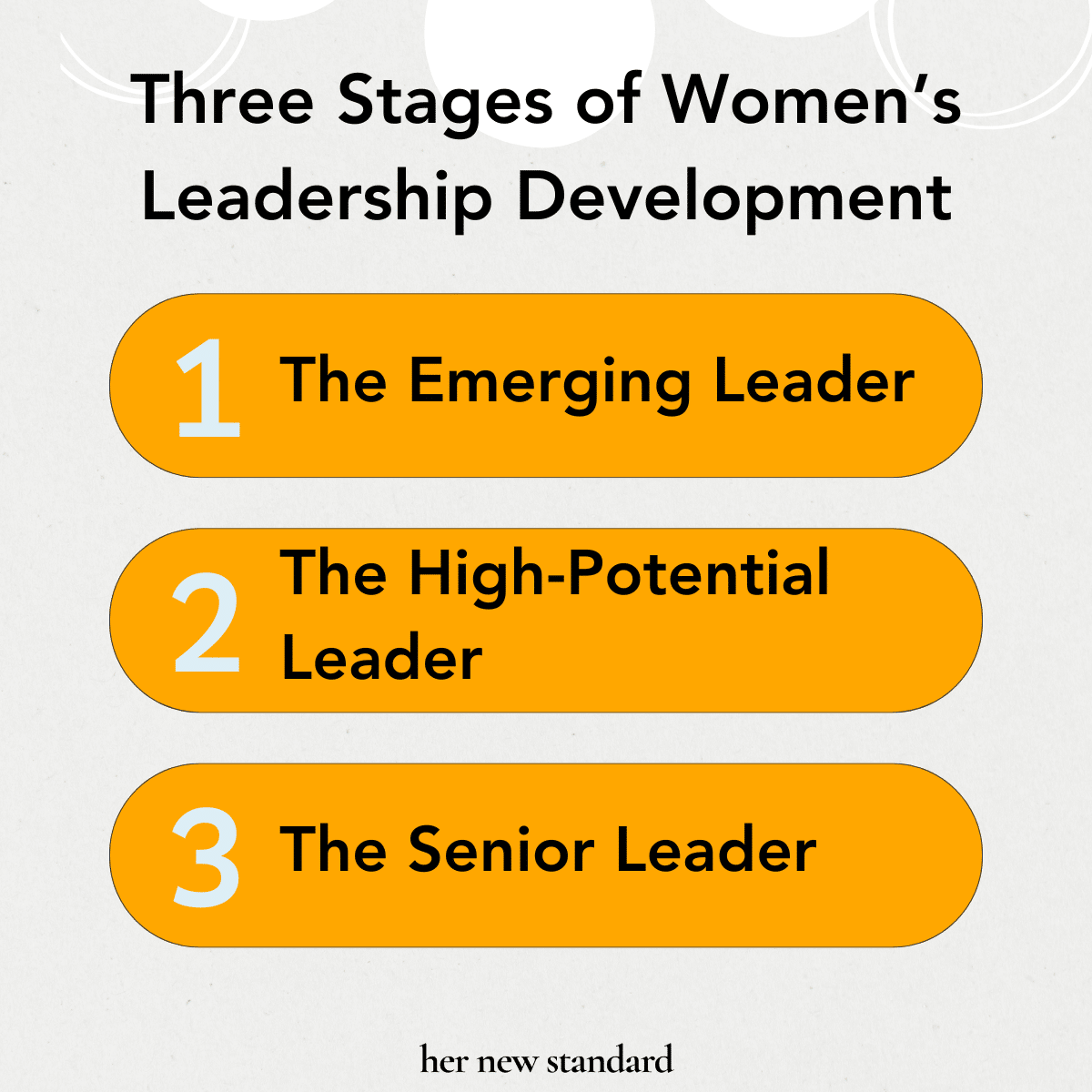Advancing in leadership is rarely a straightforward path, especially for women. A significant barrier is the “broken rung” at the first step up to manager. According to McKinsey’s 2024 Women in the Workplace report, for every 100 men promoted to manager, only 81 women are promoted. This disparity at the managerial level hinders women’s progression into higher leadership roles.
While many organizations invest in one-off training sessions or mentorship programs, these efforts often fail to create lasting impact. What truly moves the needle is a structured leadership development pathway that evolves alongside a woman’s career trajectory. A longer-term approach not only supports women leaders at each stage of their growth but also ensures organizations are developing a strong, sustainable leadership pipeline.
Why Sustained Leadership Development Matters
Unlike sporadic leadership development initiatives, a structured and sustained approach provides:
- Clear progression: Women leaders understand where they are and what steps they need to take to advance.
- Targeted support: Development opportunities are aligned with specific career stages, making them more effective.
- Sustained impact: Long-term programs create lasting behavioral shifts, rather than momentary inspiration.
- Stronger retention: Organizations that invest in longer-term leadership development see higher engagement and retention among female leaders.
The Three Stages of Women’s Leadership Development
Through our work at Her New Standard, we’ve seen that organizations that successfully support their female talent often follow a three-tiered approach.

The Emerging Leader
These are high-potential women at the early-to-mid stages of their leadership journey. While they have demonstrated strong performance and leadership potential, they often lack formal leadership training or strategic development opportunities.
Characteristics of Emerging Leaders:
- Typically have 3-6 years of experience
- Eager to take on more responsibility but may lack confidence
- Seeking mentorship and skill-building opportunities
How Organizations Can Support Them:
- Establish mentorship or sponsorship programs
- Provide access to stretch assignments and cross-functional projects
- Offer structured peer networking opportunities
- Create a culture where emerging leaders are encouraged to take risks and develop their leadership voice
The High-Potential Leader
Women in this stage are well on their way to leadership roles. They typically have experience leading projects and are preparing for larger responsibilities.
Characteristics of High-Potential Leaders:
- Have 6-12 years of experience
- Some experience leading people or projects
- Ready to develop strategic influence and executive presence
How Organizations Can Support Them:
- Provide leadership development programs such as Fast Track, which helps women overcome internal and external barriers to leadership
- Facilitate senior sponsorship to help high-potential women gain visibility
- Offer career-mapping exercises to align leadership ambitions with business needs
- Encourage participation in leadership roundtables or peer-learning cohorts
The Established Leader
Established women leaders are already making a significant impact in their organizations, yet they still face challenges when it comes to ascending into higher ranks of leadership. Supporting women at this stage is critical for ensuring continued progression into executive roles.
Characteristics of Established Leaders:
- Have 12+ years of experience
- Managing large teams or entire functions
- Poised to take on enterprise-level leadership
How Organizations Can Support Them:
- Enroll leaders in Accelerate, a program designed to enhance senior-level leadership skills
- Offer strategic coaching and feedback to refine leadership effectiveness
- Facilitate sponsorship for senior roles
- Create pathways to executive roles through succession planning
Common Pitfalls in Women’s Leadership Development
Many organizations struggle to create a lasting impact with their leadership development efforts. Here are some common pitfalls to avoid:
- One-size-fits-all programs: Women leaders need targeted support based on their career stage.
- Lack of executive sponsorship: Without senior-level advocacy, high-potential women struggle to gain visibility.
- Focusing only on skills training: Leadership development must also address mindset, confidence, and strategic influence.
- Neglecting long-term development: Short-term workshops don’t create sustained leadership growth.
The Role of HNS in Leadership Development
At Her New Standard, we recognize that leadership development isn’t one-size-fits-all. That’s why we offer a suite of programs tailored to meet the unique challenges women face at each stage of their leadership journey. Whether through our Fast Track and Accelerate programs, executive coaching, or custom solutions, we help organizations build a leadership pipeline that truly supports women leaders.Traditional Leadership Development vs. Sustained Pathway
| Traditional Leadership Development | Sustained Leadership Pathway |
| One-off training sessions | Ongoing, stage-based programs |
| General leadership concepts | Targeted development aligned with career stage |
| Focus on skills only | Emphasis on skills, mindset, and strategic influence |
| Limited follow-up or reinforcement | Continuous learning and leadership progression |
Are you ready to build a strong leadership pipeline for women in your organization?
Enjoyed this post? You might also like…




